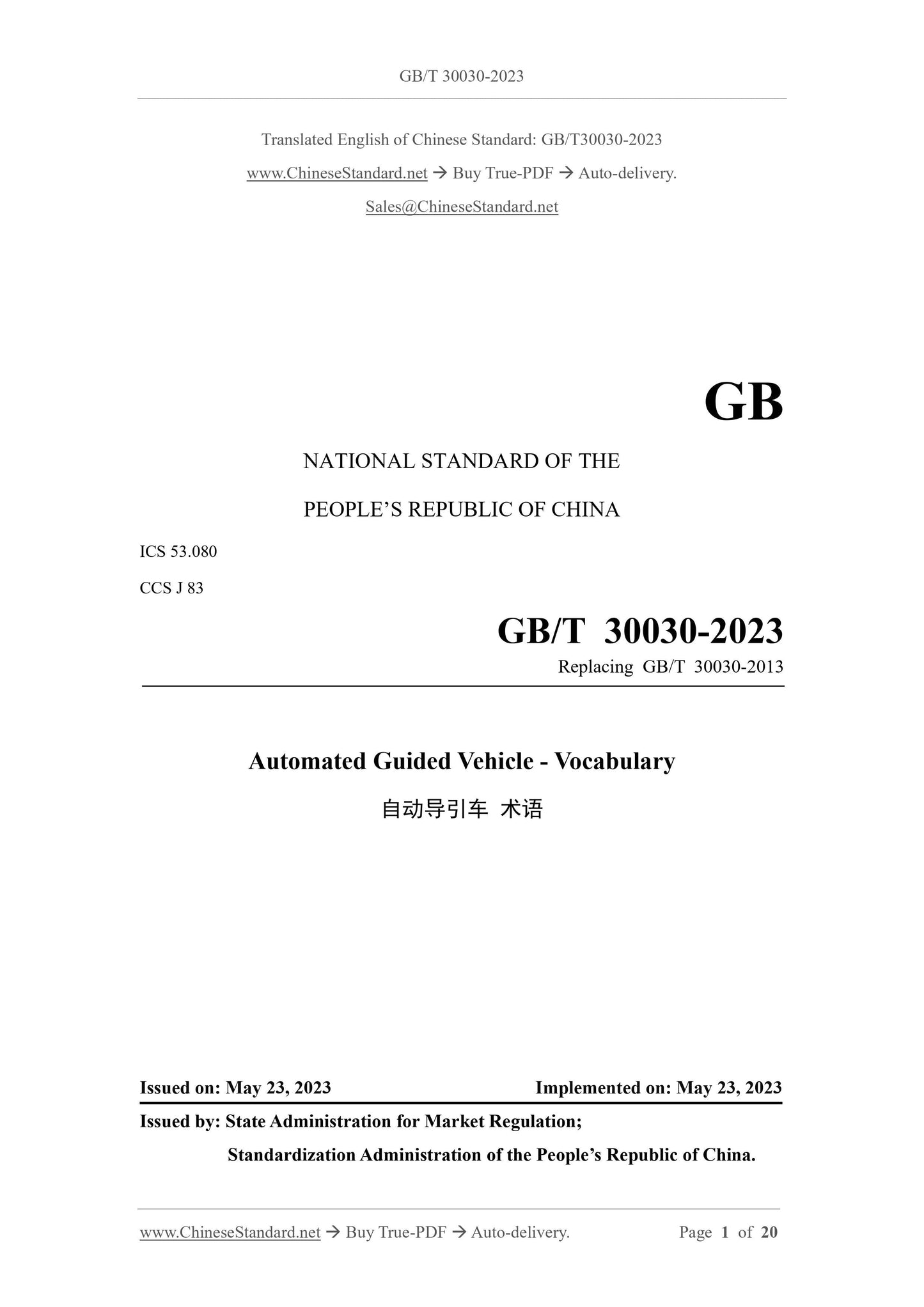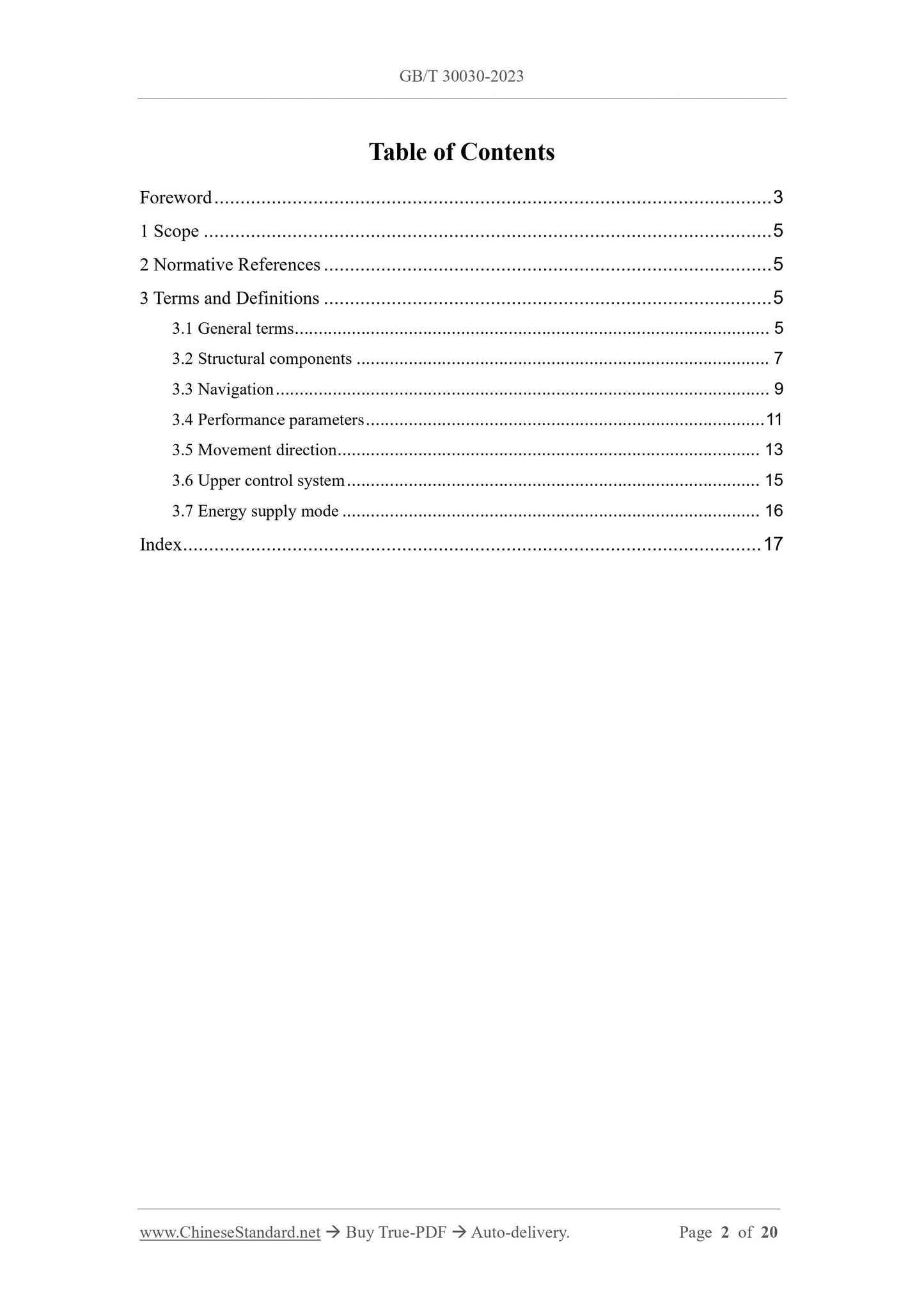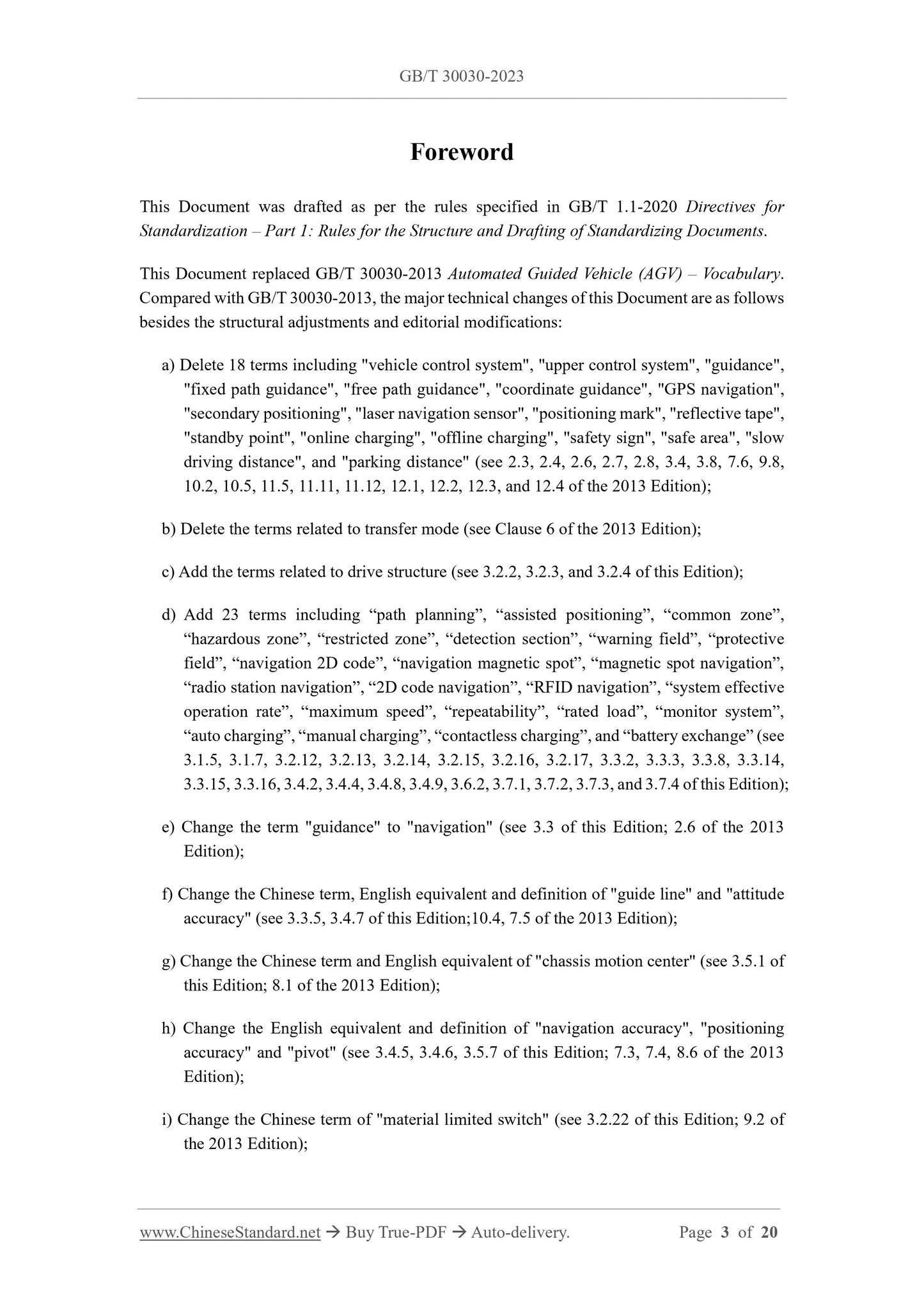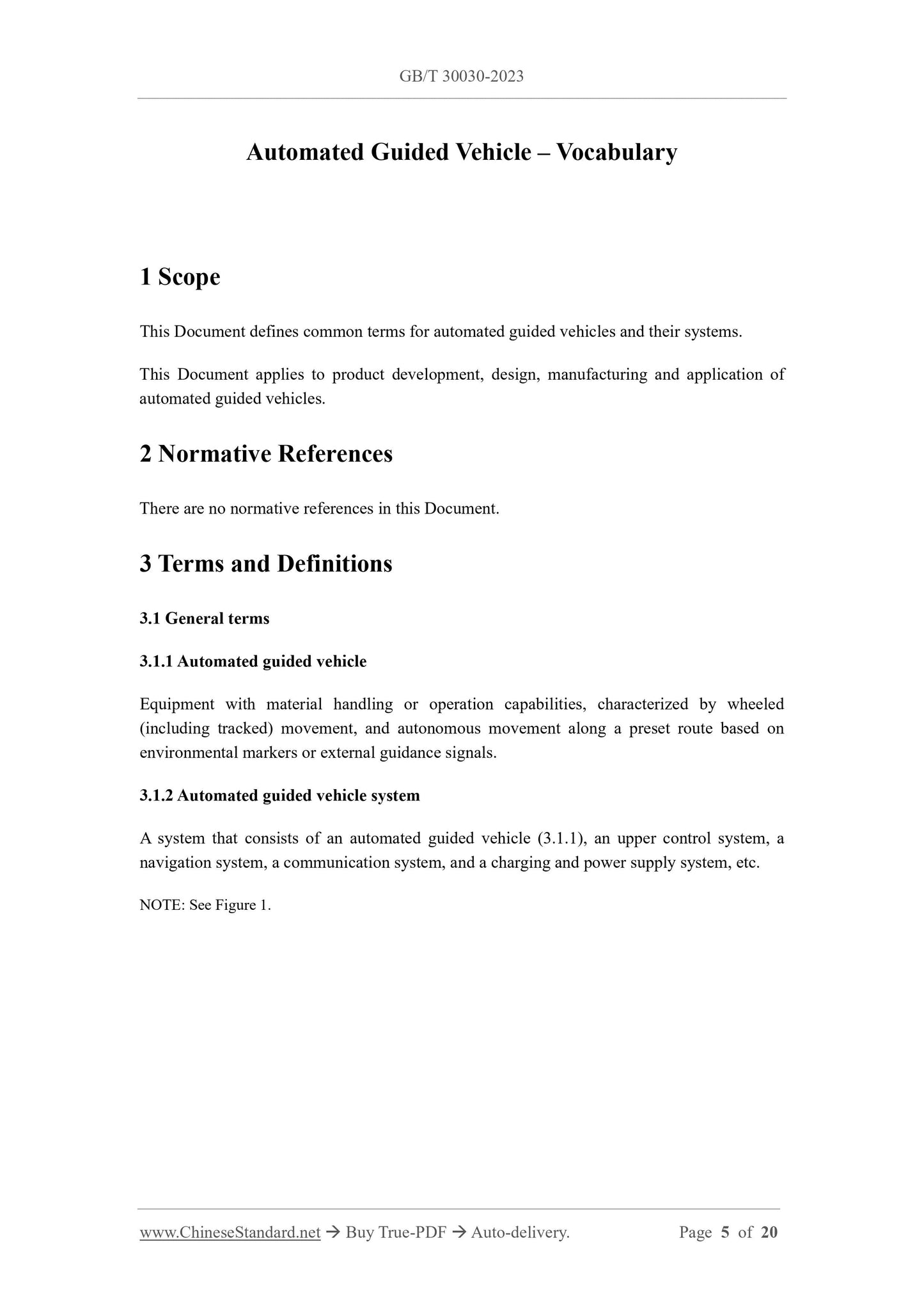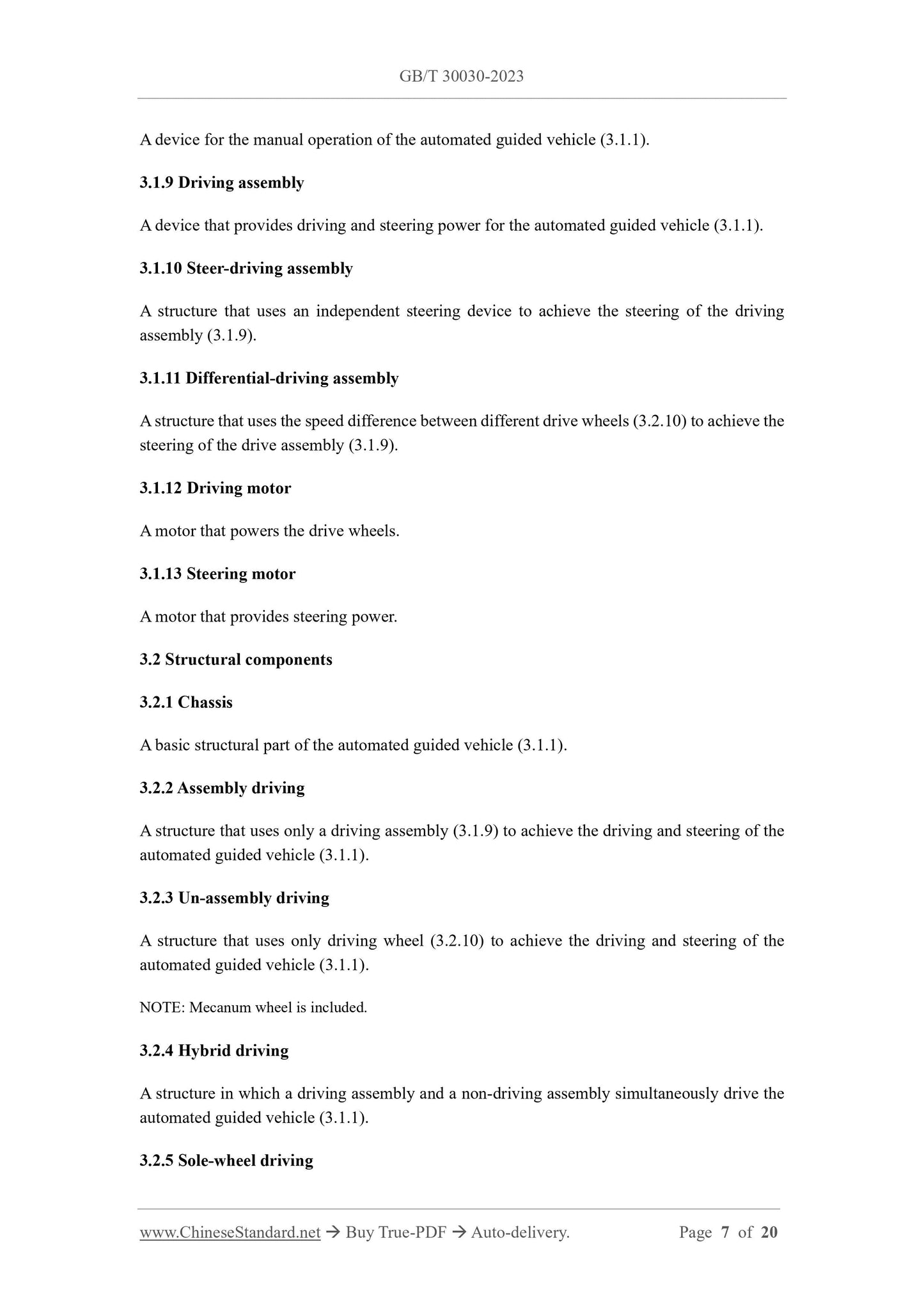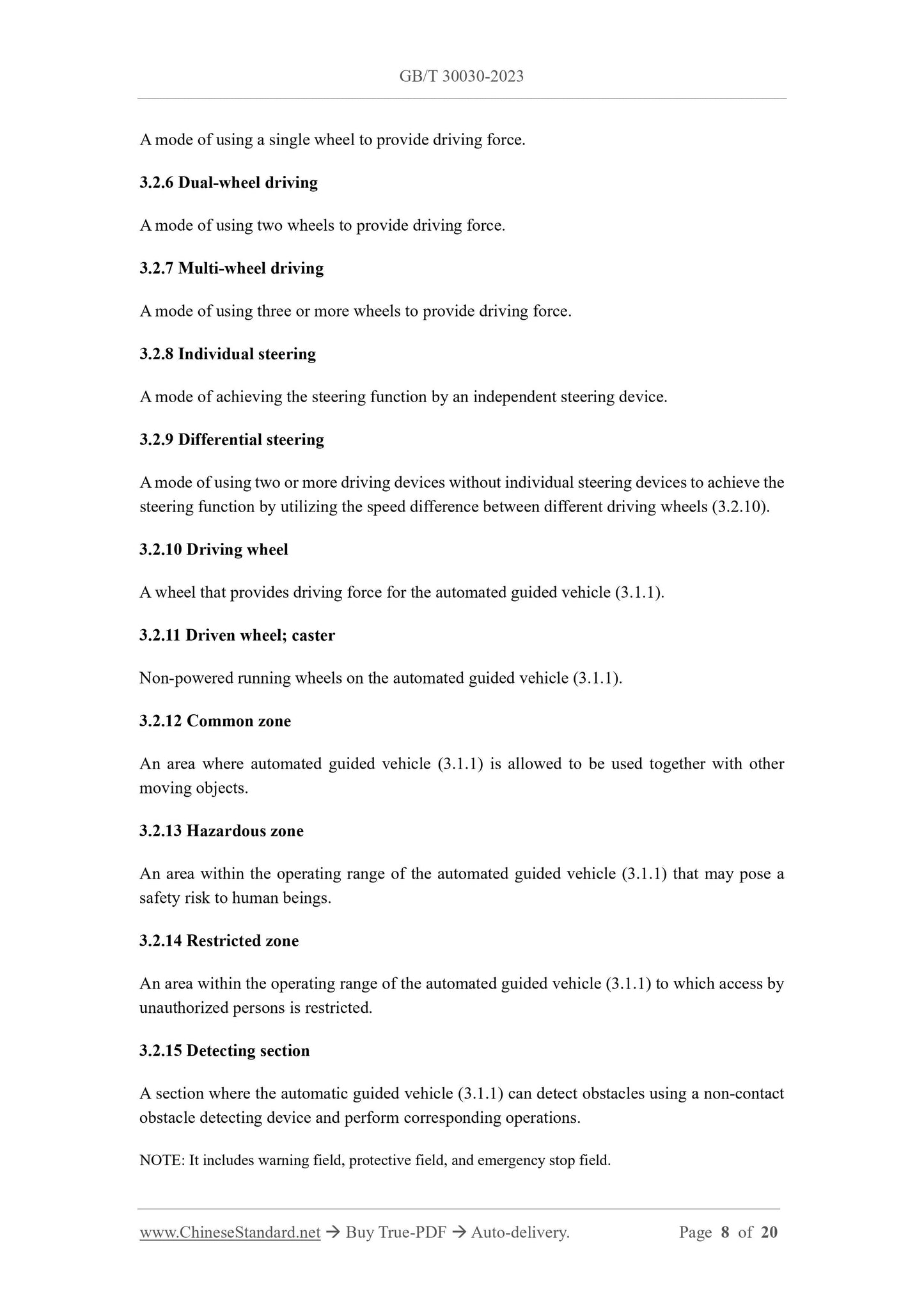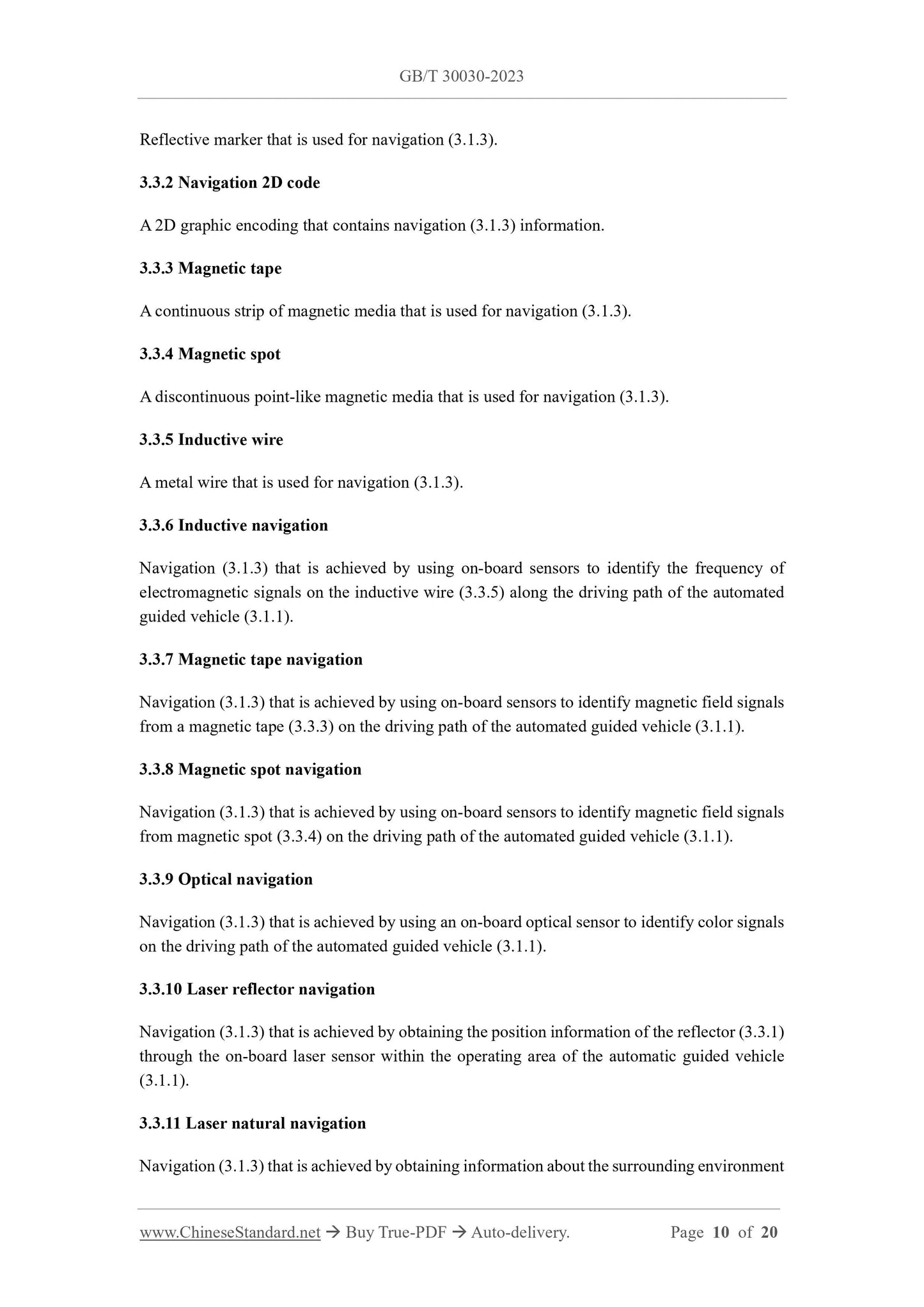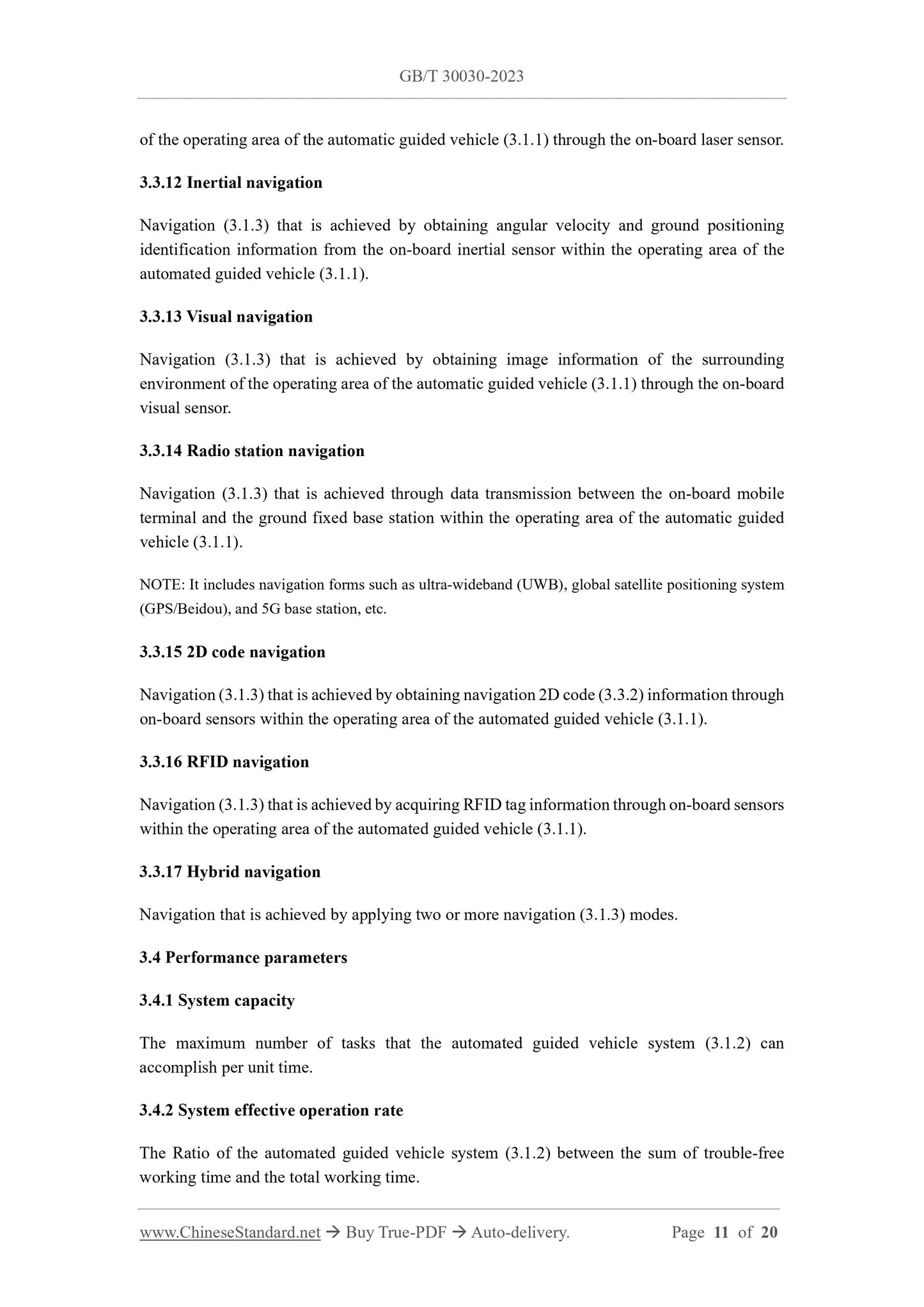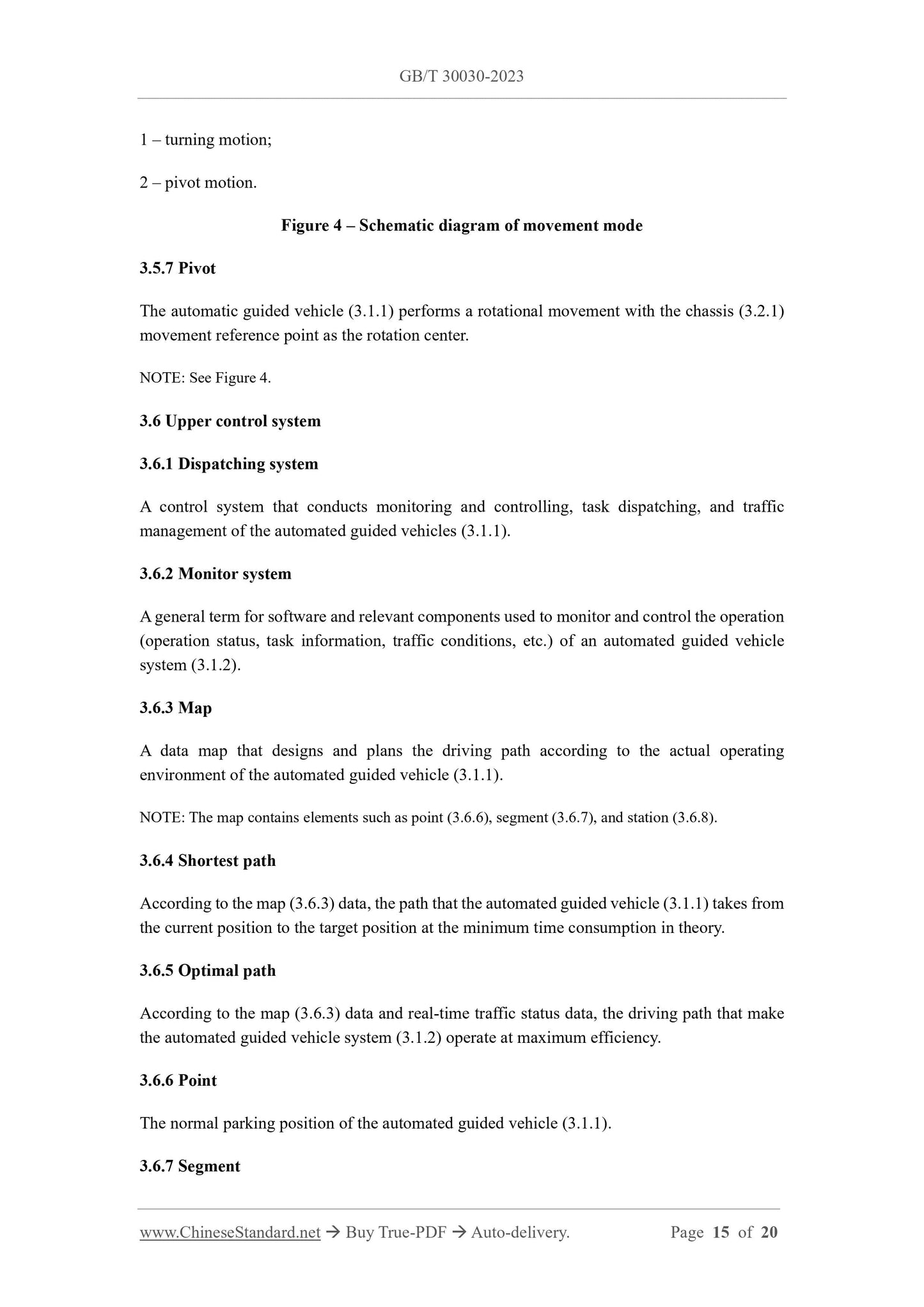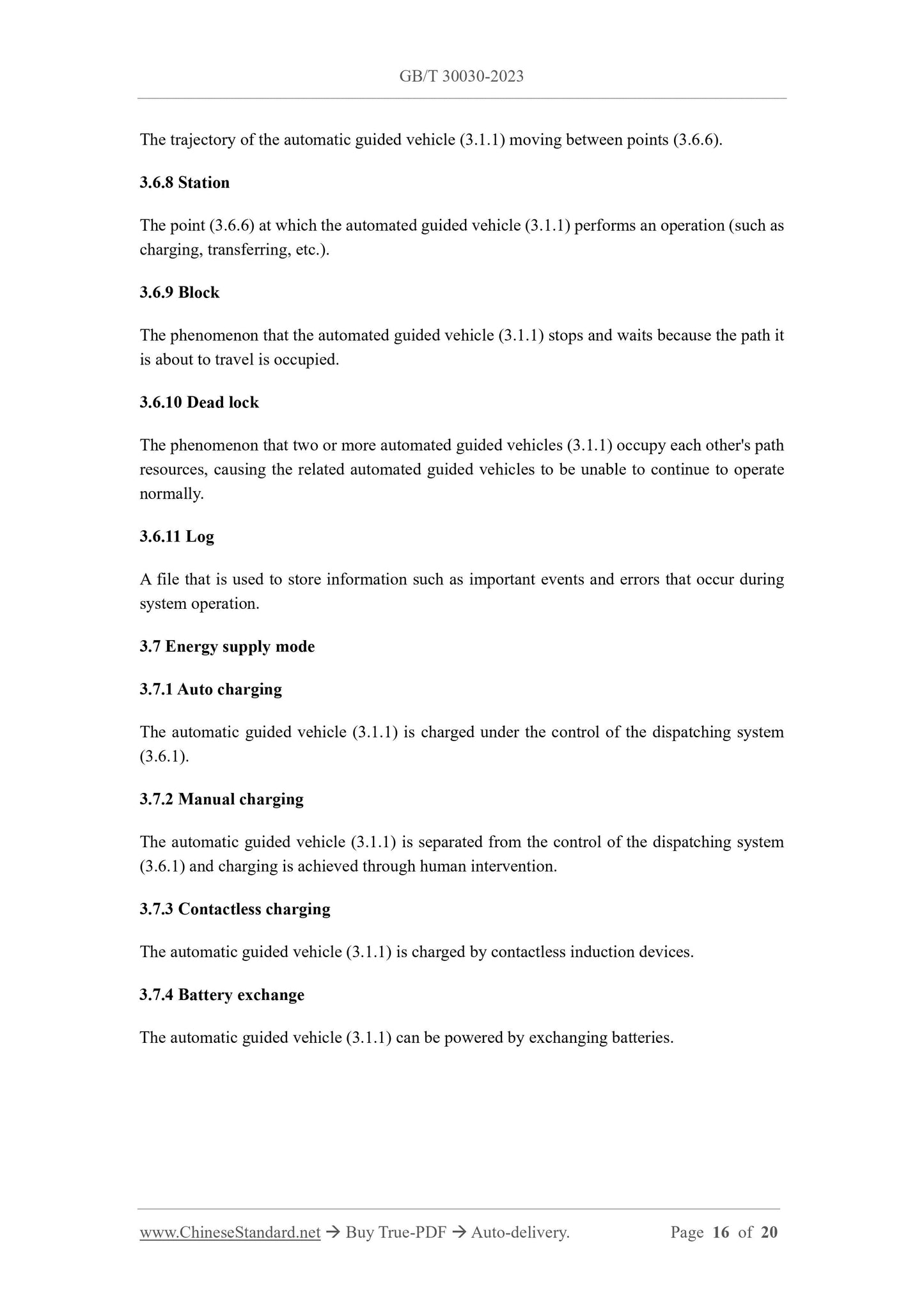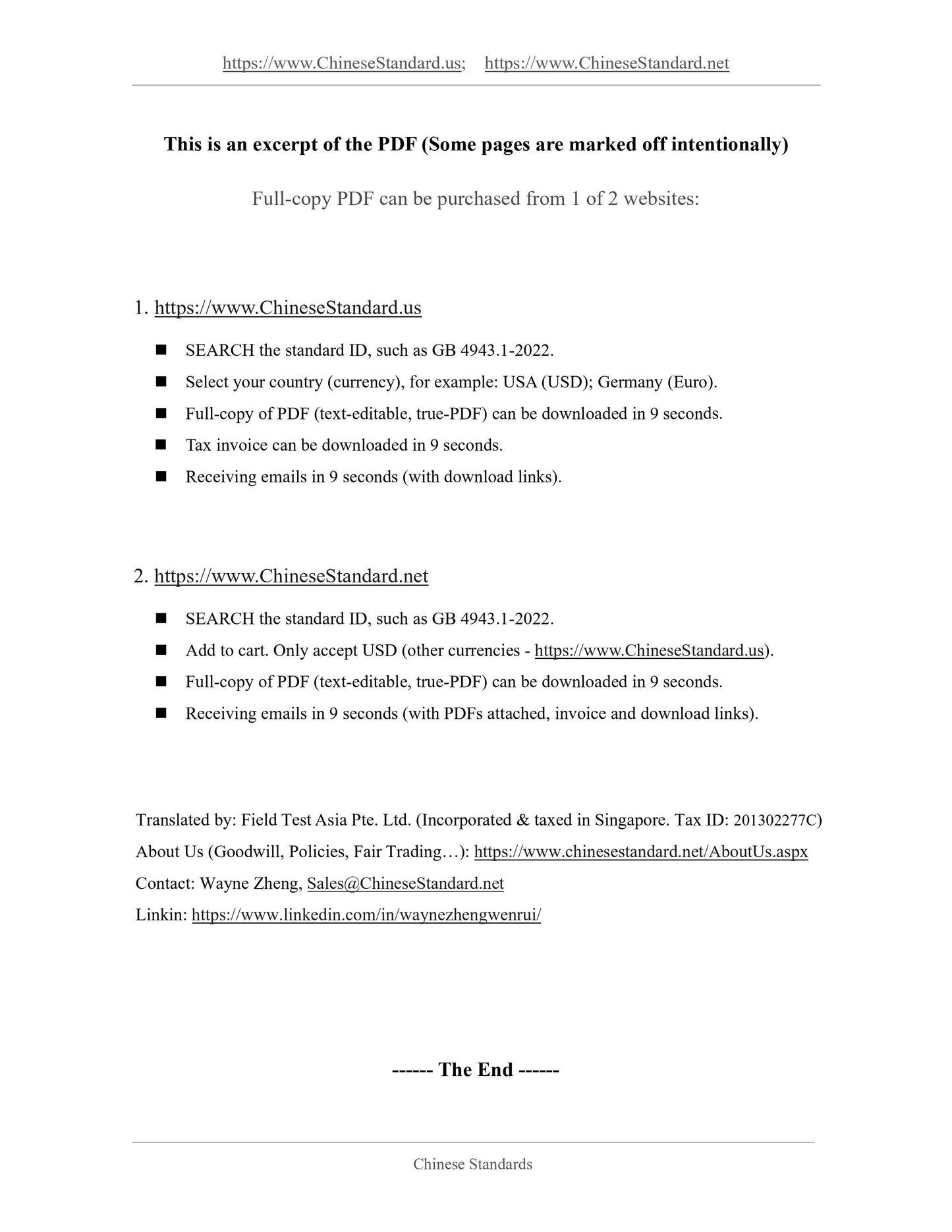1
/
of
11
www.ChineseStandard.us -- Field Test Asia Pte. Ltd.
GB/T 30030-2023 English PDF (GB/T30030-2023)
GB/T 30030-2023 English PDF (GB/T30030-2023)
Regular price
$290.00
Regular price
Sale price
$290.00
Unit price
/
per
Shipping calculated at checkout.
Couldn't load pickup availability
GB/T 30030-2023: Automated guided vehicle - Vocabulary
Delivery: 9 seconds. Download (and Email) true-PDF + Invoice.Get Quotation: Click GB/T 30030-2023 (Self-service in 1-minute)
Newer / historical versions: GB/T 30030-2023
Preview True-PDF
Scope
This Document defines common terms for automated guided vehicles and their systems.This Document applies to product development, design, manufacturing and application of
automated guided vehicles.
Basic Data
| Standard ID | GB/T 30030-2023 (GB/T30030-2023) |
| Description (Translated English) | Automated guided vehicle - Vocabulary |
| Sector / Industry | National Standard (Recommended) |
| Classification of Chinese Standard | J83 |
| Classification of International Standard | 53.080 |
| Word Count Estimation | 18,176 |
| Date of Issue | 2023-05-23 |
| Date of Implementation | 2023-05-23 |
| Older Standard (superseded by this standard) | GB/T 30030-2013 |
| Issuing agency(ies) | State Administration for Market Regulation, China National Standardization Administration |
Share
